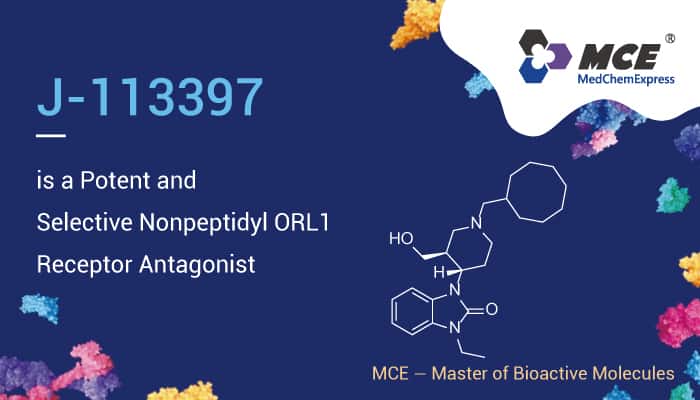The opioid receptor-like (ORL1) receptor, is also known as the nociceptin opioid peptide receptor (NOP). The ORL1 receptor belongs to the opioid subfamily of G protein-coupled receptors whose natural ligand is the 17 amino acid neuropeptide. J-113397 is an opioid agent which was the first potent and highly selective antagonist for the ORL1 receptor. It is several hundred times selective for the ORL-1 receptor over μ-, δ-, and κ-opioid receptors.
The ORL1 receptor widely exists in the central nervous system, in particular in the forebrain, throughout the brainstem, and in both the dorsal and ventral horns of the spinal cord. Nociceptin and the ORL1 receptor share high sequence similarity with opioid peptides, particularly dynorphin A, and their receptors.
However, nociceptin and dynorphin A may use distinct molecular pathways to bind and activate their cognate receptors. Nociceptin binds the ORL1 receptor with a 500- to 1000-fold higher affinity than it does the κ-opioid receptor. Therefore, nociceptin is a potent agonist of the ORL1 receptor but is inactive toward the κ-opioid receptor. Meanwhile, ORL1 receptor agonists show powerful and non-addictive analgesic effects.
ORL1 receptor antagonists have the potential for the research of depression and Parkinson’s disease.

J-113397, as a potent ORL1 Receptor Antagonist, inhibits NociceptinNociceptin/orphanin FQ-stimulated GTPγS binding to CHO cells expressing ORL1 but had no effect on GTPγS binding by itself. In vivo, J-113397 dose-dependently inhibits hyperalgesia elicited by intracerebroventricular administration of NociceptinNociceptin/orphanin FQ in mice. Meanwhile, J-113397 can attenuate experimental parkinsonism through the over-inhibition of the nigrothalamic pathway.
All in all, This receptor is involved in the regulation of numerous brain activities, particularly instinctive and emotional behaviors. And, J-113397 is a potent and selective nonpeptidyl ORL1 receptor antagonist without any agonistic effects on other opioid receptors.
References:
[1]. New DC, et, al. Neurosignals. 2002 Jul-Aug;11(4):197-212.
[2]. Marti M, et, al. J Neurosci. 2007 Feb 7;27(6):1297-307.